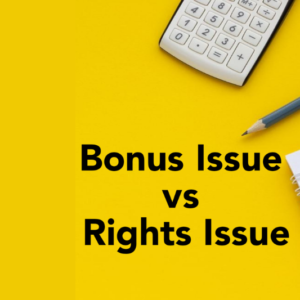Risk is commonly understood as the likelihood of a negative outcome occurring or a positive one not materializing. In financial markets, risk is typically quantified by the variance in returns. However, it’s important to distinguish between risk tolerance and risk capacity, terms often used interchangeably but with distinct meanings. Risk tolerance refers to your emotional and psychological ability to handle fluctuations and uncertainty, while risk capacity is about your financial ability to endure potential losses. Recognizing these differences is crucial for effectively designing and managing your investment portfolio. Let’s delve into how risk capacity and risk tolerance compare and why understanding them is key to successful financial planning.
What is Risk Capacity?
Risk is commonly understood as the likelihood of a negative outcome occurring or a positive one not materializing. In financial markets, risk is typically quantified by the variance in returns. However, it’s important to distinguish between risk tolerance and risk capacity, terms often used interchangeably but with distinct meanings. Risk tolerance refers to your emotional and psychological ability to handle fluctuations and uncertainty, while risk capacity is about your financial ability to endure potential losses. Recognizing these differences is crucial for effectively designing and managing your investment portfolio. Let’s delve into how risk capacity and risk tolerance compare and why understanding them is key to successful financial planning.
What Is Risk Tolerance?
Risk tolerance pertains to an individual’s emotional and psychological capacity to handle uncertainty and volatility associated with risk-taking. It reflects one’s attitude and comfort level with risk rather than their financial ability to absorb potential losses.
This tolerance is subjective and can differ significantly from person to person, often influenced by factors such as age, gender, and income. While some people exhibit high risk tolerance, others are more cautious. Factors like personality, past experiences, need for stability, and behavioral biases play a key role in shaping an individual’s risk tolerance.
Risk tolerance is subjective; Risk capacity is objective
Why is risk tolerance considered subjective? It’s because risk tolerance is largely an emotional response influenced by one’s mental make-up. Some individuals panic at the first sign of risk, while others can endure significant risk without flinching. For instance, during a market crash, some traders panic when stocks drop by 5%, while others remain calm even if stocks fall by 20%. The latter group has a higher risk tolerance. However, a person with high risk tolerance may or may not have the capacity to take on such risk. This brings us to the concept of risk capacity.
Risk capacity is objective, defined by clear boundaries and measurable criteria. For instance, top businessmen like Bill Gates, Mark Zuckerberg, and Jeff Bezos have the capacity to take on billions of dollars of risk. When the privacy issue surfaced, Zuckerberg lost several billion dollars, and Amazon’s market cap dropped 10% over profitability concerns, reducing Bezos’s wealth by about $8 billion. Despite these setbacks, Bezos eventually became twice as rich. Large stockholders and investors possess significant risk capacity but typically avoid uncalculated risks.
Risk capacity is more relevant for financial planning compared to risk tolerance
From a financial planning perspective, risk capacity is far more crucial than risk tolerance. You might mentally tolerate a 50% drop in your portfolio, but that doesn’t determine how much risk you should take. Risk capacity is about how much risk you can handle. Your financial plan relies on leveraging time and compounding to create an investment mix that meets your goals efficiently. As you build and monitor your portfolio, the key factor is your risk capacity. Your debt-equity ratio, liquidity mix, and balance between short-term and long-term investments all depend on your risk capacity. In financial planning, when we discuss risk, we’re referring to your risk capacity, not your risk tolerance.
Consider a case study of two investors. Investor A has a net worth of Rs.50 crore and is willing to risk a 10% portfolio depreciation. Investor B has a net worth of Rs.30 lakhs but is willing to risk a 50% portfolio depreciation. How would you evaluate these two investors?
Clearly, Investor A has a higher risk capacity but lower risk tolerance. Essentially, he is a conservative investor focused on capital preservation. On the other hand, Investor B has a lower risk capacity but higher risk tolerance. This illustrates that risk tolerance and risk capacity do not always align. Often, they are quite different. When you have high risk capacity but low risk tolerance, you might take less risk than needed, resulting in sub-optimal asset allocation. Conversely, with low risk capacity but high risk tolerance, you risk playing a dangerous game in the market.
Why Should Investors Determine Their Risk Capacity?
Evaluating your risk capacity allows you to design an investment strategy that not only meets your financial objectives but also matches your personal comfort level with risk. Understanding your risk capacity helps you balance potential returns with the amount of risk you can handle, ensuring that your investments align with both your financial aspirations and your tolerance for uncertainty. This tailored approach enables you to make informed decisions that support your goals while maintaining a level of risk that you are comfortable with, ultimately fostering a more effective and personalized investment plan.
Can Risk Tolerance Change?
Yes, risk tolerance can fluctuate over time. Various factors such as age, market conditions, and broader economic changes can influence an individual’s risk tolerance. As you age, your comfort with risk might shift due to changing financial goals and needs. Additionally, rising or falling stock markets can impact your perception of risk and your willingness to take on new risks. Economic conditions, including inflation rates and interest rates, can also play a role in shaping your risk tolerance. Therefore, it’s important to regularly reassess your risk tolerance to ensure it aligns with your current financial situation and market environment.
Conclusion Risk capacity is influenced by factors such as age, wealth, and income. Individuals who successfully preserve their wealth usually have a risk tolerance that is significantly lower than their risk capacity. On the other hand, those who create wealth often embrace calculated and measured risks. Successful entrepreneurs, investors, and industrialists typically fall into this category, balancing substantial risk capacity with the strategic acceptance of risks to achieve significant growth.







